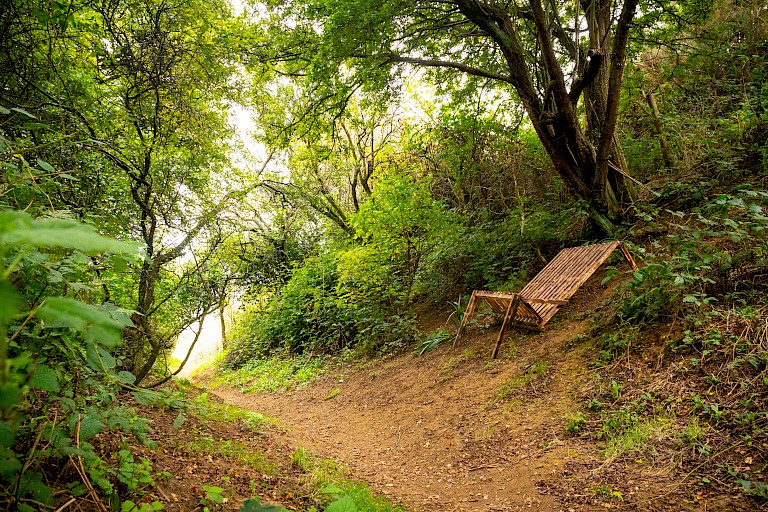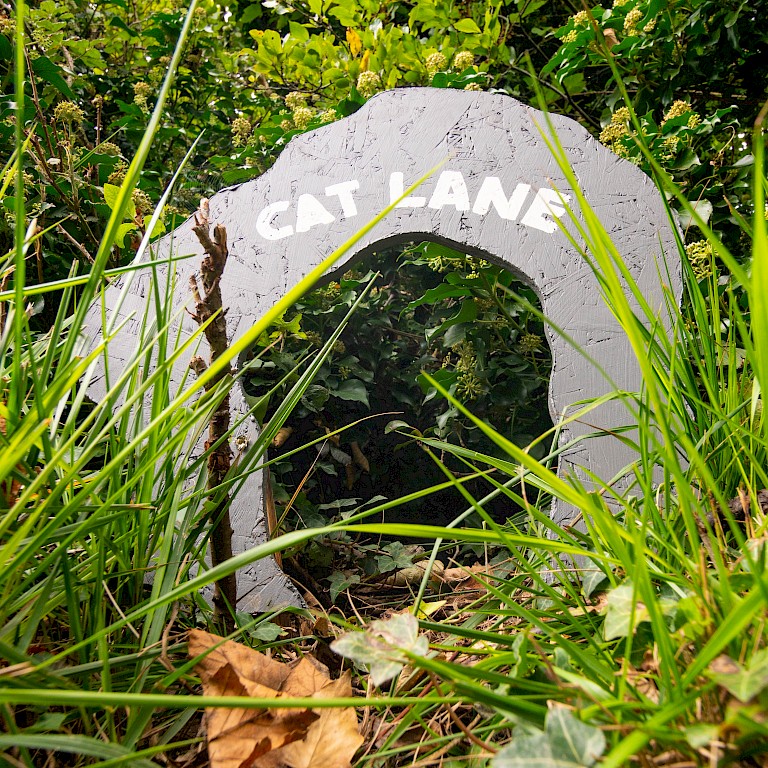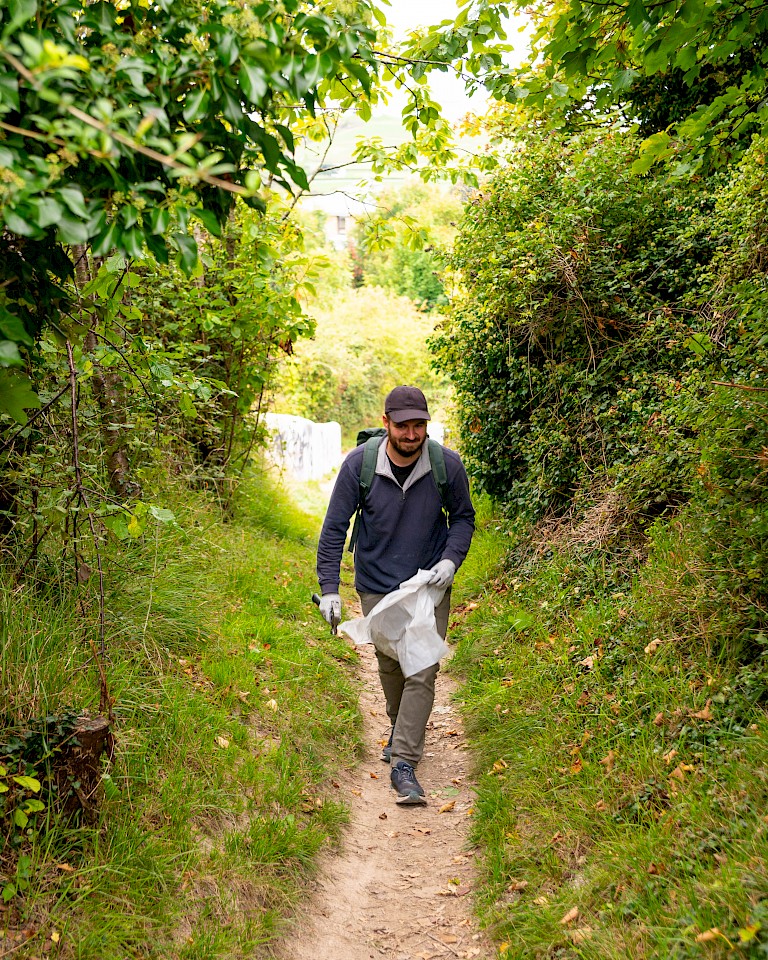


In a climate where liberal England is clinging onto its last remaining ties with Europe, it’s no wonder we choose now to celebrate the natural heritages of our country. All the hidden links that have been lying dormant beneath our shores again have been brought to the surface. SALT + EARTH Festival 2022 shone a light on and celebrated Kent and Northern France’s “geology that is oh spectacular and worldly exquisite.” (1) Suddenly, the land and all its varied surfaces have become an Area of Natural Beauty. Chalk becomes a precious stone worthy of worship. The chalk found on our Kentish Downs holds all the secrets of our part of the world's history. The one steadfast thing in our history that has bound Kent and Europe together for an unfathomable amount of years, since the earth came alive billions of years ago, and will for sure bind us together, most likely forever, trickles down to our chalk. Within the minerals found on our shores the whole history of the world can be discovered. Our famous chalk cliffs connect us to Northern France and the continent in the most tangible and tactile way. For our cliffs and Northern France’s cliffs were once one, a bridge between England and Europe. And that is why we are still here celebrating our inherent union between these countries in 2022 today. We are not an island. We are a collapsed bridge. Now, many people across Europe are striving to rebuild said bridge between these two continents and in doing so will rebridge the emotional gap some have tried to sever. Celebrating the Kent Downs and Northern France as something connected and not separate is the start to reaffirming our interminable relationship.
Aaron Kopp, Folkestone Fringe’s September Artist in Residence, came to us as an outsider looking inwardly at our forsaken landscape and stood amazed by its elegant, unrefined, natural beauty. Instead of, as so many often do, heading straight to our centre and the places of public recognition, he headed to the liminal outskirts of Folkestone and proclaimed them areas of interest. Aaron spoke about finding magic and how he wants to find and/or create his own magical cosmos’ in Folkestone. I asked Aaron what he meant by “magical cosmos” and he said it “is a worldview that prioritises the experience of life over the authority of truth.” An encouragement to see beyond the simple and factual to allow yourself to explore things that are normally dismissed as commonplace or uninteresting. It is a task to find magic in something that is plain and devoid of mystery. Aaron’s intention was to find somewhere ordinary and make something of it. Choosing an unnamed path with little to no evidence of public nostalgia attached to it, nothing to make it name-worthy was of course his first step. After exploring several paths, making detours, and getting lost in our Kent Downs, Aaron decided on an unassuming path that led from the top of Folkestone’s East Cliff to Capel-le-Ferne and the white cliffs of the Kent Downs. A path that is used by many but only to transport from A to B. Quite unloved and uncared for. As a result, Aaron’s three main motives were to make the path a usable space, a destination rather than something to pass through, to find its magic, and to reward people's curiosity.
In a true Into the Wild manner, Aaron observed the path over the course of his 1 month residency until he had examined every different hour in a day from sunrise to sunset and logged his findings in daily short, amusing, and informative diary entries.
“05.09.2022: Folkestone
When I walk the path I feel like what?
The myth of Sisyphus.”(2)
A first seed of his. An idea that led him to find some mystery and reason. He refers to the Ancient Greek myth of Sisyphus. Sisyphus was the guy eternally damned by the Gods to the task of pushing a boulder up the side of a hill. Only, when reaching the apex, for the boulder to roll straight back down again. A repetitive struggle forever more until Sisyphus retook the meaning of his task so that “the lucidity that was to constitute his torture at the same time crowns his victory.” (3) He did not let his punishment defeat him and instead found joy because “his fate belongs to him. His rock is his thing.” (4) So Aaron becomes Sisyphus.
Over the next few days Aaron devotes himself to cleaning and caring for the path. He removes masses of rubbish and dog poo alike. He builds his boulder and hikes it uphill each time he visits. He rests it in spaces that come clear to him and begins to etch out an image of the space he has claimed. He pictures the path's future. Within this time more mysteries start to reveal themselves to him. The path has much more life than previously imagined.
“07.10.2022: Folkestone
I made it up right below the first curve where one can see the bunker. I am sitting here hiding because a young man is on top of the bunker singing beautifully!” (5)
He documents the human life that inhabits or encounters the path and comes to realise that the path has shaped the lives of many people, it is not as lonely and desolate as once thought. Others too have ritualised the path and chosen to love it. Now, the path begins to take shape as Aaron finds ownership and begins to care for it dutifully like it’s his own.
“11.09.2022: Folkestone
When I arrived I found my bench destroyed. Broken in three pieces from which one was even thrown a few metres into the woods.” (6)
Like in every great tale, as Aaron begins to execute his vision, he enters some turmoil and backlash, perhaps he has inadvertently stolen something from the path's predecessors? Maybe they don’t want it to become known? The destruction of his bench only highlights the divide between the boundaries and the centre. Someone is trying to keep him out! Perhaps we feel the sting of this destruction more vehemently as we are so used to the process being the other way around; the idea that someone is denying a bid to better a place is absurd in the eyes of those on the inside.
By the end of his residency, Aaron had shaped an old path and made something usable and what’s more a visitable end destination. Coining it “Leaf and Stone” the simple name reminds us to think like Aaron and appreciate the amazingly regular parts of our surroundings. From the cute animal tunnels, to the benches that allow you to pause and survey the town or the lattice of trees above you that intertwine like a skyscape, this is no longer a place to pass through.
Aaron has mystified a place that has been dismissed as ordinary and in doing so has brought new life to the path. His magical cosmos remains in the path, even since his departure, simply as a result of his attention and dedication to it, begging visitors to appreciate and enjoy it too. It took an outsider to come and find joy and deep interest in areas long overlooked by the community for the forgotten area to be magic-ified. He has only planted a seed but from this many more fruits and flora will grow. Like Sisyphus, “he is still on the go. The rock is still rolling.” (7)
- Chloe Robinson for Aaron Kopp's SALT + EARTH / Magic Carpets 2022 Response

Diane Dever, quote from Aaron’s talk 20.09.22
Aaron Kopp, diary entry 05.09.2022
Albert Camus, The Myth of Sisyphus, 1955
Albert Camus, The Myth of Sisyphus, 1955
Aaron Kopp, diary entry 07.09.2022
Aaron Kopp, diary entry 11.09.2022
Albert Camus, The Myth of Sisyphus, 1955


